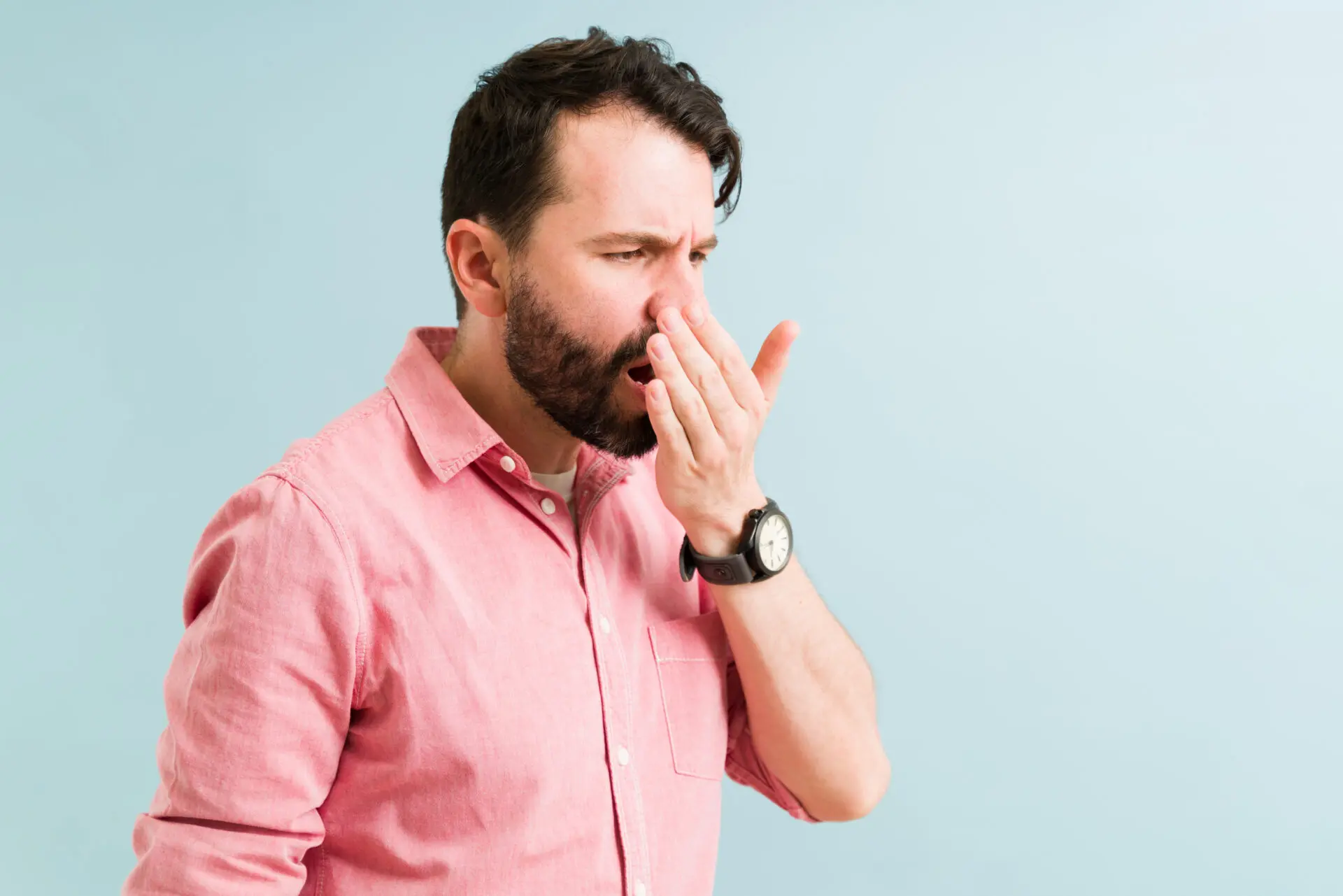
14 Jun Breath Odor: Causes, Variations, and Remedies
Introduction
Have you ever wondered why breath smells different in each person? The world of breath odor variations is often overlooked, but understanding the causes and different smells of bad breath, also known as halitosis, can help us address this common oral issue effectively. In this blog post, we will delve into the fascinating topic of breath odor, exploring its diverse variations, factors influencing it, and tips for combating bad breath.
The Symphony of Breath Smells: Types and Variations
Breath odor comes in a multitude of scents, each with its distinct characteristics. Understanding these variations can shed light on potential underlying causes. Here are some common types of bad breath smells:
- Sulfuric Stench: A pungent smell reminiscent of rotten eggs, often caused by bacteria present in the mouth and on the tongue. These bacteria produce sulfur compounds, contributing to the foul odor.
- Fruity or Sweet Aroma: Breath that exudes a fruity or sweet smell might indicate an underlying medical condition such as diabetes. Elevated blood sugar levels can lead to a distinctive fruity breath odor.
- Putrid Stench: This type of breath odor, which is often described as having a sickly sweet smell, is similar to that of decaying matter. It can be caused by a number of conditions, including poor oral hygiene, gum disease, or the presence of food particles in the mouth. When bacteria break down the food, they release foul-smelling gases, which are then expelled through the mouth. Poor oral hygiene can also cause a buildup of bacteria in the mouth, resulting in bad breath. Gum disease can lead to the release of foul-smelling gases and pus, which can also cause putrid breath.
- Ammonia-like Odor: A urine-like smell on the breath may be a sign of kidney or liver problems. When these organs are not functioning optimally, waste products accumulate in the body and can affect breath odor.
Factors Influencing Breath Odor
The smell of a person’s breath can vary from person to person and can be affected by a variety of factors. Diet, oral hygiene, health conditions, and even lifestyle habits can all play a role in affecting the smell of a person’s breath.
- Oral Hygiene: Neglecting proper oral hygiene practices, such as inadequate brushing and flossing, can lead to the buildup of plaque and bacteria, resulting in unpleasant breath.
- Diet and Foods: Certain foods, such as garlic, onions, and spices, contain volatile compounds that are absorbed into the bloodstream and eventually expelled through the breath. These odorous compounds can linger even after digestion.
- Lifestyle Habits: Habits like smoking and alcohol consumption can leave a lasting impact on breath odor. The chemicals present in tobacco and alcoholic beverages can contribute to foul-smelling breath.
- Underlying Medical Conditions: Various health conditions, including respiratory infections, sinusitis, acid reflux, and liver or kidney problems, can manifest as bad breath. Treating the underlying condition is crucial for resolving halitosis.
 Identifying the Cause of Bad Breath: Tips and Remedies
Identifying the Cause of Bad Breath: Tips and Remedies
Now that we understand the different smells and factors influencing breath odor, let’s explore how to identify the cause of bad breath and combat it effectively:
Maintain Good Oral Hygiene: Brush your teeth at least twice a day with fluoride toothpaste, floss daily, and scrape your tongue to remove bacteria and residue. Regular dental check-ups and professional cleanings are essential for optimal oral health.
Watch Your Diet: To prevent bad breath, it is important to monitor your diet and limit foods and beverages that can cause odors. Foods such as garlic, onion, and certain spices are known to cause bad breath, so it is important to reduce or avoid them. Additionally, reducing sugar and processed carbohydrates can help reduce odor-causing bacteria in the mouth. It is also important to drink plenty of water to help keep your mouth hydrated and stimulate saliva production, which helps to wash away bacteria that can cause bad breath. Additionally, brushing your teeth and tongue twice a day and flossing regularly can help reduce bad breath caused by food particles stuck in between the teeth.
Quit Smoking: Smoking not only causes yellowish staining of your teeth, but it also dries out your mouth, reducing the production of saliva. This lack of saliva can lead to bacteria growth in the mouth, which can cause persistent bad breath. Additionally, smoking can cause unhealthy changes in your mouth, such as gum disease and oral cancer. If you are a smoker, it is important to seek out resources and support to help you quit. Quitting smoking can have a positive impact on your breath and overall health. Talk to your doctor about tools and strategies to help you quit, and find support in your local community or online. With the right help, you can quit smoking and improve your breath and health.
Seek Professional Help: If your bad breath persists despite maintaining good oral hygiene, it’s crucial to consult a dental professional or healthcare provider. They can evaluate your condition, identify any underlying causes, and provide appropriate treatment.
Conclusion
Understanding the diversity of breath odor and its underlying causes can help us to better understand what is causing bad breath and how to effectively tackle it. Good oral hygiene practices, such as brushing teeth and flossing regularly, can help to reduce the formation of bacteria which can cause bad breath. Additionally, making mindful dietary choices, such as avoiding foods that contribute to bad breath, can also help to keep bad breath at bay.
Finally, it is important to be aware of any underlying medical conditions, such as gum disease, that may be contributing to bad breath. By addressing these causes, we can combat halitosis and enjoy fresh breath once again. again.
Remember, seeking professional help is essential for persistent cases of bad breath. Embrace these tips and remedies, and bid farewell to unpleasant breath, welcoming a new era of fresh and confident smiles.
Disclaimer: This blog post is intended for informational purposes only and should not replace professional medical advice. Consult a healthcare provider for personalized guidance on your specific condition.




